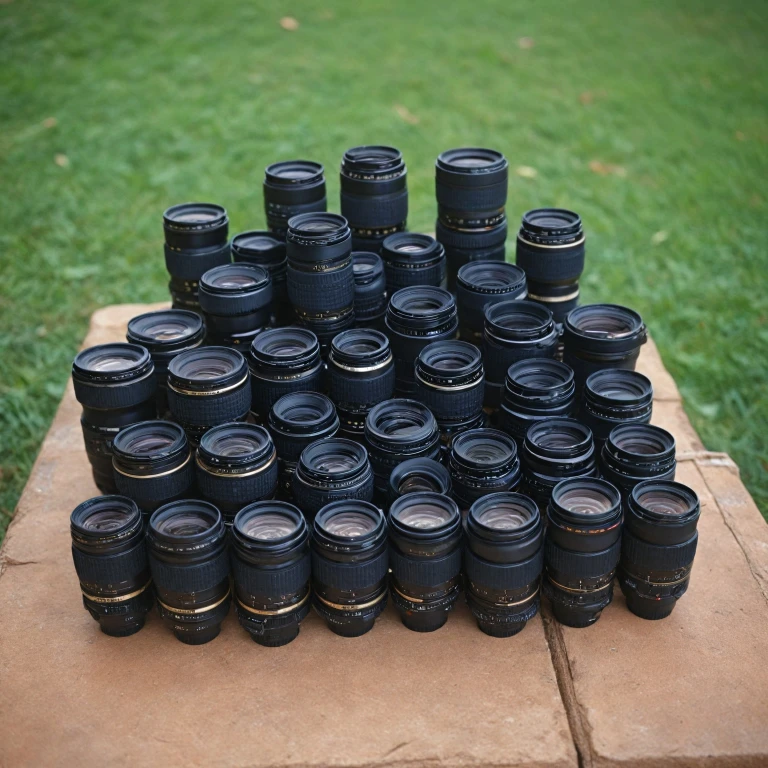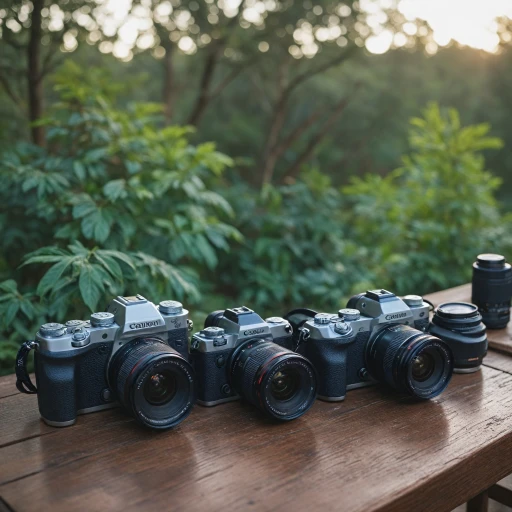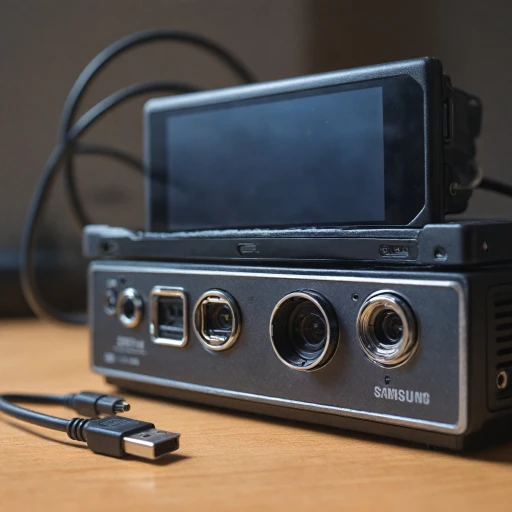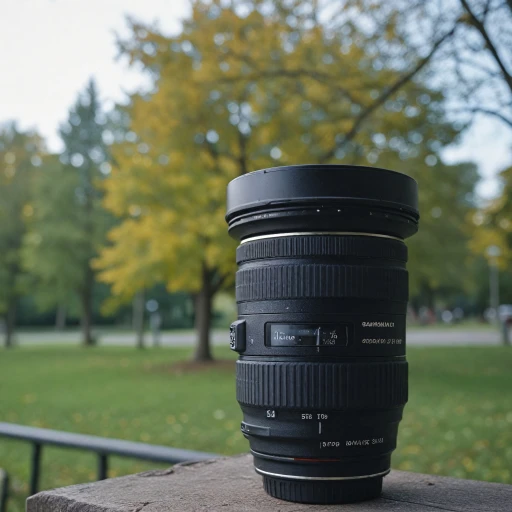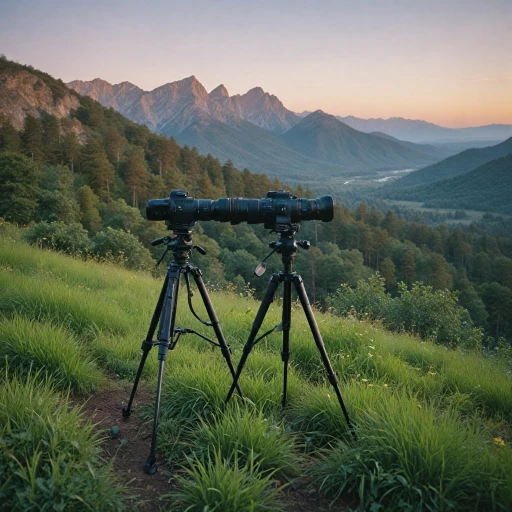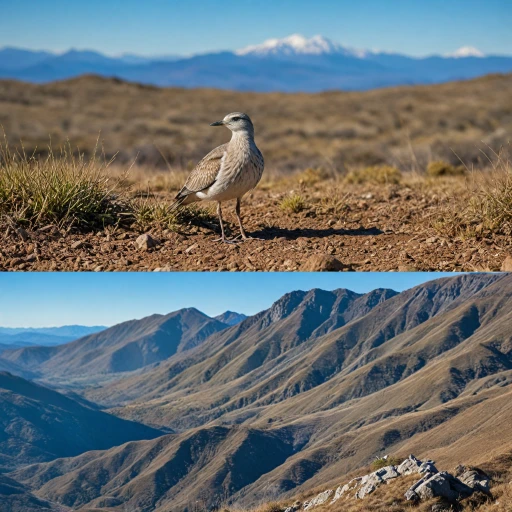
Understanding Telephoto Zoom Lenses
Grasping the Basics of Telephoto Zoom Lenses
Telephoto zoom lenses are a staple in the toolkit of many photographers, offering the ability to capture distant subjects with clarity and precision. These lenses are particularly popular among wildlife and sports photographers, where getting close to the action is often not feasible. Understanding the fundamentals of these lenses can help you make informed decisions when selecting the right equipment for your needs.
Telephoto zoom lenses are characterized by their long focal lengths, which allow photographers to zoom in on distant subjects. The focal length of a lens determines its field of view, and telephoto lenses typically have focal lengths starting from around 70mm and extending to 300mm or more. This range provides flexibility in framing your shots, making them ideal for capturing subjects that are far away.
One of the key advantages of telephoto zoom lenses is their versatility. They can be used in a variety of settings, from capturing wildlife in its natural habitat to photographing athletes in motion. Nikon's range of telephoto zoom lenses, known as Nikkor lenses, are renowned for their quality and performance. These lenses often come equipped with features like image stabilization and vibration reduction, which help maintain image quality even in challenging conditions.
When choosing a telephoto zoom lens, it's important to consider factors such as the maximum aperture, which affects the lens's performance in low light conditions, and the overall weight and size of the lens, especially if you plan to use it for extended periods. Additionally, the type of camera you use, whether it's a full frame or a mirrorless camera, will influence the compatibility and performance of the lens.
In the following sections, we'll delve deeper into the specific features of Nikon's telephoto zoom lenses, offering insights into how to choose the best lens for your needs and tips for using them effectively. We'll also explore common challenges photographers face when using these lenses and provide solutions to overcome them.
Key Features of Nikon Telephoto Zoom Lenses
Distinguishing Features of Nikon's Telephoto Lenses
Nikon's reputation for crafting high-quality telephoto zoom lenses is well-deserved, with a range of features that cater to both amateur photographers and professionals. These lenses are engineered to enhance image quality while offering excellent versatility in various shooting scenarios.- Focal Length Versatility: One of the standout elements of Nikon's telephoto zoom lenses is the range of focal lengths offered. With options spanning from 70-200mm to super telephoto ranges like 200-500mm, photographers have the flexibility to capture subjects both near and far without having to frequently change lenses.
- Image Stabilization and Vibration Reduction: For those concerned about camera shake, particularly in low light or when using a long focal length, Nikon's Vibration Reduction (VR) technology is a game-changer. This feature helps to ensure sharp images, mitigating the effects of shaky hands or windy conditions.
- Superb Aperture Performance: Nikon lenses often boast wide aperture settings, such as f/2.8 or f/4, allowing photographers to excel in various lighting conditions. A wide aperture also contributes to beautiful background bokeh, making subjects pop against softly blurred backgrounds.
- Build Quality and Durability: Many of Nikon's telephoto zoom lenses come with a robust build, made to withstand the rigours of different weather conditions. The weather-sealed construction is particularly valued in harsh environments, making them ideal companions for adventurous shoots.
- Compatibility with Nikon's Systems: These lenses come equipped with the Nikon mount, suitable for both DSLR and mirrorless cameras with adapters. This ensures high compatibility, allowing existing Nikon users to integrate new lenses into their collection seamlessly.
- Advanced Autofocus Capabilities: Nikon Nikkor lenses are often praised for their fast and accurate autofocus. The inclusion of state-of-the-art technologies means quicker focus acquisition, critical for capturing fleeting moments such as wildlife or sporting events.
Choosing the Right Nikon Telephoto Zoom Lens for Your Needs
Factors to Consider for Selecting Your Ideal Telephoto Zoom Lens
When choosing a Nikon telephoto zoom lens, aligning it with your photography goals and style is essential. Below are some factors to consider to ensure you select the best lens for your needs:- Focal Length and Zoom Range: The focal length determines how close you can get to your subject. A longer focal length is beneficial for wildlife and sports photography, while a shorter range might be more suitable for landscape shots.
- Aperture Size: A larger aperture allows more light to enter, which is especially useful in low light conditions. Consider lenses with a maximum aperture size for better image quality.
- Image Stabilization: Nikon's Vibration Reduction technology is a must-have for reducing camera shake, ensuring clear images even at longer focal lengths.
- Weight and Size: Larger lenses can be cumbersome. If you frequently shoot on-the-go, lighter lenses might be more practical.
- Type of Camera: Consider if your camera is full frame or a crop sensor. Ensure compatibility with Nikon mount options for seamless integration.
- Budget: Price is always a consideration. Weigh the features against cost to find a lens that offers good value. Investing in a high-quality lens like the Nikon Nikkor series might offer better long-term benefits.
Tips for Using Telephoto Zoom Lenses Effectively
Mastering Techniques with Your Telephoto Zoom Lenses
To achieve the best results with Nikon's telephoto zoom lenses, mastering certain techniques is essential. Here are ways to optimize their use and capture incredible images with your camera:
- Understand Your Equipment: Before heading out, get familiar with the lens specifications. Knowing the zoom range and maximum aperture helps in setting expectations, especially when handling different lighting conditions.
- Use Image Stabilization: When shooting handheld, make sure to enable image stabilization. Nikon's vibration reduction feature will be your ally in reducing motion blur in low light or when using longer focal lengths.
- Employ a Tripod for Stability: Although the camera's stabilization features are excellent, a good tripod offers extra support. It's particularly useful for maintaining focus over prolonged sessions in super telephoto scenarios.
- Optimize Aperture for Depth of Field: Playing with aperture settings can change the depth of field dramatically. For a shallower depth of field and beautiful bokeh effects, use wider apertures, balancing out with appropriate shutter speed and ISO settings.
- Leverage Autofocus Systems: Nikon's autofocus systems are fast and reliable. Utilize this feature to focus on your subject swiftly, especially important when capturing fast-moving subjects in sports or wildlife photography.
- Consider Lighting Conditions: Proper lighting enhances the lens's performance, so adequate exposure is crucial. In low light situations, consider a higher ISO setting, while taking care to avoid excess noise.
By applying these strategies, you'll find great satisfaction in the versatility that Nikon telephoto zoom lenses offer. Not only will you enhance image quality, but you'll also expand the creative possibilities your camera lens can achieve.
Common Challenges and Solutions with Telephoto Zoom Lenses
Overcoming Common Telephoto Zoom Lens Challenges
Telephoto zoom lenses, such as those offered by Nikon, are powerful tools for photographers, but they come with their own set of challenges. Understanding these can help you make the most of your investment and improve your photography skills.
Dealing with Low Light Conditions
One of the primary challenges with telephoto lenses is shooting in low light. These lenses often have smaller maximum apertures, which can limit the amount of light entering the camera. To counter this, consider using a camera with good low-light performance or increasing the ISO setting, keeping in mind that this may introduce noise. Additionally, using a tripod can help stabilize your camera, allowing for longer exposure times without camera shake.
Managing Focus and Sharpness
Achieving sharp focus with a telephoto zoom lens can be tricky, especially at longer focal lengths. Autofocus systems can sometimes struggle, so it’s beneficial to practice manual focusing. Also, ensure your camera's autofocus settings are optimized for the type of photography you're doing. Using a lens with image stabilization or vibration reduction can also help maintain sharpness by reducing the effects of camera shake.
Handling Weight and Size
Telephoto lenses are often larger and heavier than other types of lenses, which can be cumbersome during long shoots. Consider using a monopod or tripod to support the weight, and ensure your camera bag is equipped to handle the size and weight of your gear. If you're using a mirrorless camera, you might find the overall setup to be lighter, which can be a significant advantage.
Cost Considerations
Telephoto zoom lenses can be expensive, and it’s important to balance your needs with your budget. While Nikon offers a range of lenses at different price points, it’s crucial to assess the features you need, such as focal length and aperture, against the cost. Sometimes, third-party lenses like those from Sigma can offer a good balance of performance and price.
Adapting to Different Shooting Scenarios
Finally, adapting to various shooting scenarios can be challenging with a telephoto lens. Whether you're capturing wildlife, sports, or landscapes, understanding the zoom range and focal length you need is essential. Practice and experience will help you learn how to quickly adjust your settings to suit different environments and subjects.
Comparing Popular Nikon Telephoto Zoom Lens Models
Comparison of Top Nikon Telephoto Zoom Lenses
When it comes to investing in a Nikon telephoto zoom lens, selecting the appropriate model can significantly affect your photography experience. Here, we'll break down some popular Nikon Nikkor telephoto zoom lenses and examine how they measure up in terms of key features, functionality, and price. Comparing these models will assist you in finding the best lens for your specific needs, whether it's for wildlife, sports, or portrait photography.
- Nikon AF-S NIKKOR 70-200mm f/2.8E FL ED VR: An excellent choice for those seeking high-quality images, this lens is renowned for its superior image stabilization, making it ideal for low light situations. With a focal length of 70-200mm, it offers great versatility without compromising on image quality. However, the price might be a consideration, as it is on the higher end.
- Nikon AF-S NIKKOR 200-500mm f/5.6E ED VR: This super telephoto zoom lens extends your zoom range significantly, allowing for outstanding detail in distant subjects. It includes vibration reduction to maintain sharp images during handheld shooting. For enthusiasts on a budget, this lens might provide the best price-to-performance ratio.
- Nikon Z 24-200mm f/4-6.3 VR: Ideal for mirrorless cameras, this lens offers a broad zoom range suitable for various applications. Although its maximum aperture is not as wide, its compact and lightweight design makes it an attractive option for those prioritizing portability and ease of use.
- Nikon AF-S NIKKOR 80-400mm f/4.5-5.6G ED VR: With a good balance between focal length and weight, this lens is a solid performer for full-frame cameras, offering high image quality and focusing capabilities. While not the lightest in its class, the combination of focal range and image quality makes it a worthwhile investment for many photographers.
By weighing the features of each lens, such as zoom range, focal length, and price, you can determine which lens best matches your shooting style and technical requirements. Whether it is versatility, budget, or specializations such as low light or super telephoto photography, Nikon has a range of options to cater to every need.
